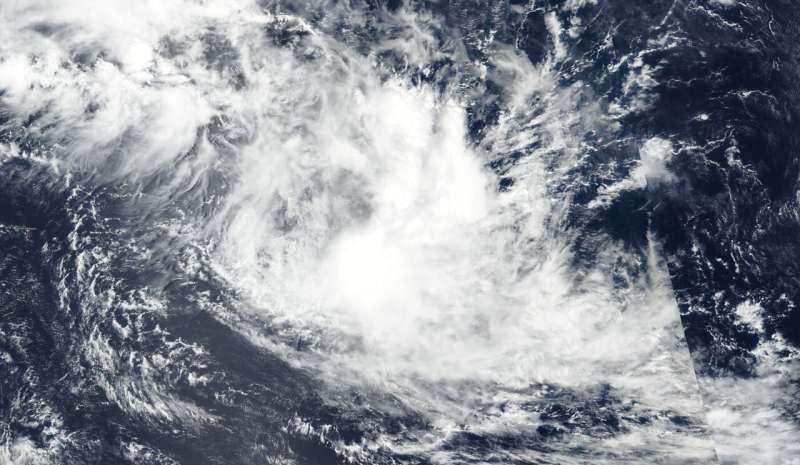NASA satellite finds wind shear adversely affecting tropical storm Francisco

Forecasters use a variety of satellite imagery to understand what is happening in a storm, and sometimes just a visible picture can tell a lot. NASA-NOAA's Suomi NPP satellite provided forecasters with a visible image of the Tropical Storm Francisco in the Southern Indian Ocean that showed wind shear was pushing clouds away from the storm's center.
Visible imagery from satellites helps forecasters understand if a storm is organizing or weakening, or if it is being affected by vertical wind shear. The shape of a tropical cyclone provides forecasters with an idea of its organization and strength. When outside winds, that is, vertical wind shear, batter a storm it can change the shape of it and push much of the associated clouds and rains to one side of it.
In general, wind shear is a measure of how the speed and direction of winds change with altitude. Tropical cyclones are like rotating cylinders of winds. Each level needs to be stacked on top each other vertically in order for the storm to maintain strength or intensify. Wind shear occurs when winds at different levels of the atmosphere push against the rotating cylinder of winds, weakening the rotation by pushing it apart at different levels.
The Visible Infrared Imaging Radiometer Suite (VIIRS) instrument aboard Suomi NPP provided a visible image of Francisco on Feb. 6. The image showed vertical wind shear is displacing the deep convection about 125 nautical miles to the southeast. In addition, multispectral satellite imagery revealed that the low-level circulation center appeared elongated. When the circulation is not circular and appears elongated, it cannot spin as quickly, just like a tire. Thus, the storm weakens. Wind shear is causing the elongation and weakening the storm.
At 4 a.m. EDT (0900 UTC), the Joint Typhoon Warning Center (JTWC) issued their final advisory on Tropical Cyclone Francisco. At that time, Francisco was located near latitude 19.1 degrees south and longitude 71.7 degrees east, about 816 nautical miles east of Port Louis, Mauritius and moving southeast. Maximum sustained winds were near 35 knots (40 mph/65 kph) and weakening.
The JTWC expects Francisco will continue moving to the southeast until it dissipates.
Tropical cyclones/hurricanes are the most powerful weather events on Earth. NASA's expertise in space and scientific exploration contributes to essential services provided to the American people by other federal agencies, such as hurricane weather forecasting.
Provided by NASA's Goddard Space Flight Center





















